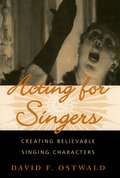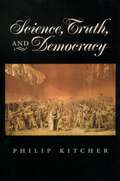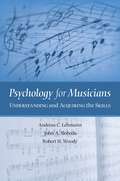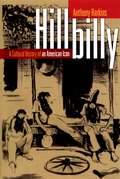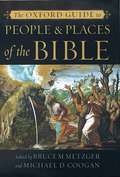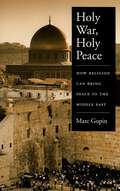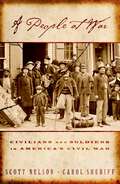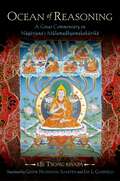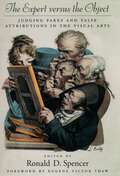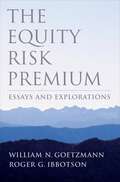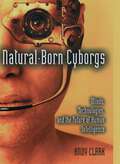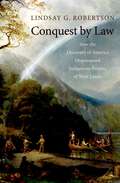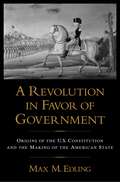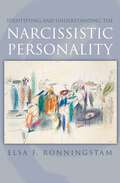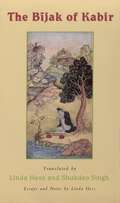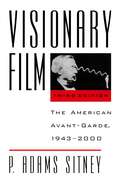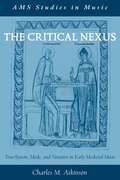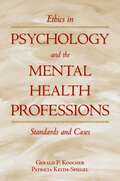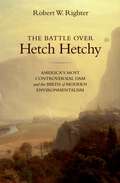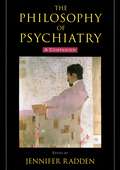- Table View
- List View
Acting for Singers: Creating Believable Singing Characters
by David F. OstwaldWritten to meet the needs of thousands of students and pre-professional singers participating in production workshops and classes in opera and musical theater, Acting for Singers leads singing performers step by step from the studio or classroom through audition and rehearsals to a successful performance. Using a clear, systematic, positive approach, this practical guide explains how to analyze a script or libretto, shows how to develop a character building on material in the score, and gives the singing performer the tools to act believably. More than just a "how-to" acting book, however, Acting for Singers also addresses the problems of concentration, trust, projection, communication, and the self-doubt that often afflicts singers pursuing the goal of believable performance. Part I establishes the basic principles of acting and singing together, and teaches the reader how to improvise as a key tool to explore and develop characters. Part II teaches the singer how to analyze theatrical work for rehearsing and performing. Using concrete examples from Carmen and West Side Story, and imaginative exercises following each chapter, this text teaches all singers how to be effective singing actors.
Science, Truth, and Democracy (Oxford Studies in Philosophy of Science)
by Philip KitcherStriving to boldly redirect the philosophy of science, this book by renowned philosopher Philip Kitcher examines the heated debate surrounding the role of science in shaping our lives. Kitcher explores the sharp divide between those who believe that the pursuit of scientific knowledge is always valuable and necessary--the purists--and those who believe that it invariably serves the interests of people in positions of power. In a daring turn, he rejects both perspectives, working out a more realistic image of the sciences--one that allows for the possibility of scientific truth, but nonetheless permits social consensus to determine which avenues to investigate. He then proposes a democratic and deliberative framework for responsible scientists to follow. Controversial, powerful, yet engaging, this volume will appeal to a wide range of readers. Kitcher's nuanced analysis and authorititative conclusion will interest countless scientists as well as all readers of science--scholars and laypersons alike.
Psychology for Musicians: Understanding and Acquiring the Skills
by John A. Sloboda Robert H. Woody Andreas C. LehmannWhat is it that accounts for the differences between musical beginners, advanced music makers, and world class performers? Virtually everyone likes music and has the capacity to be musical in some way (despite what some may say about themselves). Yet far fewer people come to be so involved with it that they identify themselves as musicians, and fewer still become musicians of international class. Psychology for Musicians provides the basis for answering this question. Examining the processes that underlie the acquisition of musical skills, Lehmann, Sloboda, and Woody provide a concise, accessible, and up-to-date introduction to psychological research for musicians.
Hillbilly: A Cultural History of an American Icon
by Anthony HarkinsIn this pioneering work of cultural history, historian Anthony Harkins argues that the hillbilly-in his various guises of "briar hopper," "brush ape," "ridge runner," and "white trash"-has been viewed by mainstream Americans simultaneously as a violent degenerate who threatens the modern order and as a keeper of traditional values of family, home, and physical production, and thus symbolic of a nostalgic past free of the problems of contemporary life. "Hillbilly" signifies both rugged individualism and stubborn backwardness, strong family and kin networks but also inbreeding and bloody feuds. Spanning film, literature, and the entire expanse of American popular culture, from D. W. Griffith to hillbilly music to the Internet, Harkins illustrates how the image of the hillbilly has consistently served as both a marker of social derision and regional pride. He traces the corresponding changes in representations of the hillbilly from late-nineteenth century America, through the great Depression, the mass migrations of Southern Appalachians in the 1940s and 1950s, the War on Poverty in the mid 1960s, and to the present day. Harkins also argues that images of hillbillies have played a critical role in the construction of whiteness and modernity in twentieth century America. Richly illustrated with dozens of photographs, drawings, and film and television stills, this unique book stands as a testament to the enduring place of the hillbilly in the American imagination. Hillbilly received an Honorable Mention, John G. Cawelti Book Award of the American Culture Association.
The Oxford Guide to People & Places of the Bible
by Michael D. Coogan Bruce M. MetzgerOffering a wealth of reliable information, The Oxford Guide to People & Places of the Bible provides more than 300 articles that cover everyone from Adam and Eve to Jesus Christ and everywhere from the Garden of Eden to Golgotha and Gethsemane. Readers will find fascinating, informative entries on virtually every major figure who walked across the biblical stage. Here are Hebrew Bible figures such as Cain and Abel, Noah and Methuselah, Abraham and Isaac, David and Goliath, Solomon and Sheba, Moses and Aaron, Naomi and Ruth, and Samson and Delilah. The New Testament is likewise well covered, with pieces on Peter and Paul, John the Baptist and Mary Magdalene, the apostles (Matthew, Mark, Luke, and John), Pontius Pilate and Judas Iscariot, and of course Jesus, Mary, and Joseph. Articles also define groups of people who figure in the Bible, such as Angels, Archangels, and Demons, the Magi, the Tribes of Israel, and Women. Entries on the significant places of the Bible, both ancient and modern, include kingdoms and countries (Egypt, Assyria, Mesopotamia) and cities (Bethlehem, Jerusalem, Sodom and Gomorrah), as well as geographical features such as the Sea of Galilee and Mount Hebron. The guide includes a detailed index for ease of use, and 14 pages of color maps, providing an accurate, detailed portrait of the biblical world. Here then is the first place to turn to find factual information on the people and places of Holy Scripture. Written by an international team of noted biblical experts, it is an essential addition to any family library as well as a useful, reliable resource for scholars and students.
Holy War, Holy Peace: How Religion Can Bring Peace to the Middle East
by Marc GopinThe Intifada of 2000-2001 has demonstrated the end of an era of diplomacy in the Arab-Israeli conflict. The style of peacemaking of the Olso Accords has been called into question by the facts on the ground. Elite forms of peacemaking that do not embrace the basic needs of average people on all sides are bound to fail. The complete neglect of deeper cultural and religious systems in the peace process is now apparent, as is the role that this neglect has played in the failure of the process. Building on his earlier book, Between Eden and Armageddon, Gopin provides a detailed blueprint of how the religious traditions in question can become a principal asset in the search for peace and justice. He demonstrates how religious people can be the critical missing link in peacemaking, and how the incorporation of their values and symbols can unleash a new dynamic that directly addresses basic issues of ethics, justice, and peace. Gopin's analysis of the theoretical, theological, and political planes shows us what has been achieved thus far, as well as what must be done next in order to ensure effective final settlement negotiations and secure, sovereign, democratic countries for both peoples.
A People at War: Civilians and Soldiers in America's Civil War
by Carol Sheriff Scott Reynolds NelsonClaiming more than 600,000 lives, the American Civil War had a devastating impact on countless numbers of common soldiers and civilians, even as it brought freedom to millions. This book shows how average Americans coped with despair as well as hope during this vast upheaval. A People at War brings to life the full humanity of the war's participants, from women behind their plows to their husbands in army camps; from refugees from slavery to their former masters; from Mayflower descendants to freshly recruited Irish sailors. We discover how people confronted their own feelings about the war itself, and how they coped with emotional challenges (uncertainty, exhaustion, fear, guilt, betrayal, grief) as well as physical ones (displacement, poverty, illness, disfigurement). The book explores the violence beyond the battlefield, illuminating the sharp-edged conflicts of neighbor against neighbor, whether in guerilla warfare or urban riots. The authors travel as far west as China and as far east as Europe, taking us inside soldiers' tents, prisoner-of-war camps, plantations, tenements, churches, Indian reservations, and even the cargo holds of ships. They stress the war years, but also cast an eye at the tumultuous decades that preceded and followed the battlefield confrontations. An engrossing account of ordinary people caught up in life-shattering circumstances, A People at War captures how the Civil War rocked the lives of rich and poor, black and white, parents and children--and how all these Americans pushed generals and presidents to make the conflict a people's war.
Ocean of Reasoning: A Great Commentary on N=ag=arjuna's Mūlamadhyamakak=arik=a
by Tsong khapaTsong kha pa (14th-century) is arguably the most important and influential philosopher in Tibetan history. An Ocean of Reasoning is the most extensive and perhaps the deepest extant commentary on Nagarjuna's Mulamadhyamakakarika (Fundamental Wisdom of the Middle Way), and it can be argued that it is impossible to discuss Nagarjuna's work in an informed way without consulting it. It discusses alternative readings of the text and prior commentaries and provides a detailed exegesis, constituting a systematic presentation of Madhyamaka Buddhist philosophy. Despite its central importance, however, of Tsong kha pa's three most important texts, only An Ocean of Reasoning remains untranslated, perhaps because it is both philosophically and linguistically challenging, demanding a rare combination of abilities on the part of a translator. Jay Garfield and Ngawang Samten bring the requisite skills to this difficult task, combining between them expertise in Western and Indian philosophy, and fluency in Tibetan, Sanskrit, and English. The resulting translation of this important text will not only be a landmark contribution to the scholarship of Indian and Tibetan Buddhism, but will serve as a valuable companion volume to Jay Garfield's highly successful translation of The Fundamental Wisdom of the Middle Way.
The Expert versus the Object: Judging Fakes and False Attributions in the Visual Arts
by Ronald D. SpencerThe authenticity of visual art has always commanded the attention of experts, dealers, collectors, and the art-minded public. Is it "real" or "original" is a way of asking what am I buying? What do I own? What am I looking at? And today more sophisticated questions are being asked: How is authenticity determined and what weight does this determination have in court? This book of essays proposes to answer those questions. Three lines of inquiry are basic to determining authenticity: a connoisseur's evaluation, historical documentation or provenance, and scientific testing. A connoisseur is an expert who evaluates the "rightness" of a work based on much careful scrutiny of many works by an artist and familiarity with that artist's usual manner of working with materials. In determining provenance, a researcher traces the physical object from the artist through a chain of ownership to the present owner--simple enough in concept, though it assumes that the documentation is not faked or inaccurate. The goal is to ensure that the object is the same one that left the artist's hand. Scientific testing, although sometimes useful, is often longer on promise than result. Dating paint or wood samples, for instance, can show that a painting was made in Rembrandt's lifetime, but it cannot prove that it is by Rembrandt's hand. If expert opinion is divided, and large sums of money are involved, a dispute over authenticity may end up in a court of law, where evaluation of expert opinion evidence can be problematic. The essays in this book clarify the nature of the methods outlined above and explain, based on case law, the present status of authentication issues in court. Contributors include experts from Christie's, London; Sotheby's, New York; and the former director of the Frick Collection; as well as leading art historians and art dealers; an art conservator; a forensic graphologist; a philanthropist and collector; and a specialist in French art law. Their collective knowledge on issues of authenticity will be invaluable for anyone interested in the world of visual art.
The Equity Risk Premium: Essays and Explorations
by William N. Goetzmann Roger G. IbbotsonWhat is the return to investing in the stock market? Can we predict future stock market returns? How have equities performed over the last two centuries? The authors in this volume are among the leading researchers in the study of these questions. This book draws upon their research on the stock market over the past two dozen years. It contains their major research articles on the equity risk premium and new contributions on measuring, forecasting, and timing stock market returns, together with new interpretive essays that explore critical issues and new research on the topic of stock market investing. This book is aimed at all readers interested in understanding the empirical basis for the equity risk premium. Through the analysis and interpretation of two scholars whose research contributions have been key factors in the modern debate over stock market perfomance, this volume engages the reader in many of the key issues of importance to investors. How large is the premium? Is history a reliable guide to predict future equity returns? Does the equity and cash flows of the market? Are global equity markets different from those in the United States? Do emerging markets offer higher or lower equity risk premia? The authors use the historical performance of the world's stock markets to address these issues.
Natural-Born Cyborgs: Minds, Technologies, and the Future of Human Intelligence
by Andy ClarkFrom Robocop to the Terminator to Eve 8, no image better captures our deepest fears about technology than the cyborg, the person who is both flesh and metal, brain and electronics. But philosopher and cognitive scientist Andy Clark sees it differently. Cyborgs, he writes, are not something to be feared--we already are cyborgs. In Natural-Born Cyborgs, Clark argues that what makes humans so different from other species is our capacity to fully incorporate tools and supporting cultural practices into our existence. Technology as simple as writing on a sketchpad, as familiar as Google or a cellular phone, and as potentially revolutionary as mind-extending neural implants--all exploit our brains' astonishingly plastic nature. Our minds are primed to seek out and incorporate non-biological resources, so that we actually think and feel through our best technologies. Drawing on his expertise in cognitive science, Clark demonstrates that our sense of self and of physical presence can be expanded to a remarkable extent, placing the long-existing telephone and the emerging technology of telepresence on the same continuum. He explores ways in which we have adapted our lives to make use of technology (the measurement of time, for example, has wrought enormous changes in human existence), as well as ways in which increasingly fluid technologies can adapt to individual users during normal use. Bio-technological unions, Clark argues, are evolving with a speed never seen before in history. As we enter an age of wearable computers, sensory augmentation, wireless devices, intelligent environments, thought-controlled prosthetics, and rapid-fire information search and retrieval, the line between the user and her tools grows thinner day by day. "This double whammy of plastic brains and increasingly responsive and well-fitted tools creates an unprecedented opportunity for ever-closer kinds of human-machine merger," he writes, arguing that such a merger is entirely natural. A stunning new look at the human brain and the human self, Natural Born Cyborgs reveals how our technology is indeed inseparable from who we are and how we think.
Conquest by Law: How the Discovery of America Dispossessed Indigenous Peoples of Their Lands
by Lindsay G. RobertsonConquest by Law: How the Discovery of America Dispossessed Indigenous Peoples of Their Lands
by Lindsay G. RobertsonIn 1823, Chief Justice John Marshall handed down a Supreme Court decision of monumental importance in defining the rights of indigenous peoples throughout the English-speaking world. At the heart of the decision for Johnson v. M'Intosh was a "discovery doctrine" that gave rights of ownership to the European sovereigns who "discovered" the land and converted the indigenous owners into tenants. Though its meaning and intention has been fiercely disputed, more than 175 years later, this doctrine remains the law of the land. In 1991, while investigating the discovery doctrine's historical origins Lindsay Robertson made a startling find; in the basement of a Pennsylvania furniture-maker, he discovered a trunk with the complete corporate records of the Illinois and Wabash Land Companies, the plaintiffs in Johnson v. M'Intosh. Conquest by Law provides, for the first time, the complete and troubling account of the European "discovery" of the Americas. This is a gripping tale of political collusion, detailing how a spurious claim gave rise to a doctrine--intended to be of limited application--which itself gave rise to a massive displacement of persons and the creation of a law that governs indigenous people and their lands to this day.
A Revolution in Favor of Government: Origins of the U.S. Constitution and the Making of the American State
by Max M. EdlingWhat were the intentions of the Founders? Was the American constitution designed to protect individual rights? To limit the powers of government? To curb the excesses of democracy? Or to create a robust democratic nation-state? These questions echo through today's most heated legal and political debates. In this powerful new interpretation of America's origins, Max Edling argues that the Federalists were primarily concerned with building a government that could act vigorously in defense of American interests. The Constitution transferred the powers of war making and resource extraction from the states to the national government thereby creating a nation-state invested with all the important powers of Europe's eighteenth-century "fiscal-military states." A strong centralized government, however, challenged the American people's deeply ingrained distrust of unduly concentrated authority. To secure the Constitution's adoption the Federalists had to accommodate the formation of a powerful national government to the strong current of anti-statism in the American political tradition. They did so by designing a government that would be powerful in times of crisis, but which would make only limited demands on the citizenry and have a sharply restricted presence in society. The Constitution promised the American people the benefit of government without its costs. Taking advantage of a newly published letterpress edition of the constitutional debates, A Revolution in Favor of Government recovers a neglected strand of the Federalist argument, making a persuasive case for rethinking the formation of the federal American state.
Identifying and Understanding the Narcissistic Personality
by Elsa F. RonningstamNarcissists have been much maligned, but according to clinicians who study personality, there are many productive narcissists who succeed spectacularly well in life because they can articulate a vision and make others follow. Elsa Ronningstam, who has been studying and treating narcissists for 20 years, presents a balanced, comprehensive, and up-to-date review of our understanding of narcissistic personality disorder, explaining the range from personality trait, which can be productive, to full-blown disorder, which can be highly destructive. Through fascinating case histories, Ronningstam shows us the inner life of narcissists, the tug of war that exists within them between self-confidence and arrogance on the one hand and painful shame and insecurity on the other. It is the first integrated clinical and empirical guide to assist clinicians in their work with narcissistic patients.
The Bijak of Kabir
by Linda Hess And Shukdeo SinghKabir was an extraordinary oral poet whose works have been sung and recited by millions throughout North India for half a millennium. He may have been illiterate and he preached an abrasive, sometimes shocking, always uncompromising message that exhorted his audience to shed their delusions, pretentions, and empty orthodoxies in favor of an intense, direct, and personal confrontation with the truth. Thousands of poems are popularly attributed to Kabir, but only a few written collections have survived over the centuries. The Bijak is one of the most important, and is the sacred book of those who follow Kabir.
Visionary Film: The American Avant-Garde, 1943-2000
by P. Adams SitneyCritics hailed previous editions of Visionary Film as the most complete work written on the exciting, often puzzling, and always controversial genre of American avant-garde film. This book has remained the standard text on American avant-garde film since the publication of its first edition in 1974. Now P. Adams Sitney has once again revised and updated this classic work, restoring a chapter on the films of Gregory J. Markopoulos and bringing his discussion of the principal genres and major filmmakers up to the year 2000.
The Critical Nexus: Tone-System, Mode, and Notation in Early Medieval Music (AMS Studies in Music)
by Charles M. AtkinsonThe Critical Nexus confronts an important and vexing enigma of early writings on music: why chant, which was understood to be divinely inspired, needed to be altered in order to work within the then-operative modal system. To unravel this mystery, Charles Atkinson creates a broad framework that moves from Greek harmonic theory to the various stages in the transmission of Roman chant, citing numerous music treatises from the sixth to the twelfth century. Out of this examination emerges the central point behind the problem: the tone-system advocated by writers coming from the Greek harmonic tradition was not suited to the notation of chant and that this basic incompatibility led to the creation of new theoretical constructs. By tracing the path of subsequent adaptation at the nexus of tone-system, mode, and notation, Atkinson promises new and far-reaching insights into what mode meant to the medieval musician and how the system responded to its inherent limitations. Through a detailed examination of the major musical treatises from the sixth through the twelfth centuries, this text establishes a central dichotomy between classical harmonic theory and the practices of the Christian church. Atkinson builds the foundation for a broad and original reinterpretation of the modal system and how it relates to melody, grammar, and notation. This book will be of interest to all musicologists, music theorists working on mode, early music specialists, chant scholars, and medievalists interested in music.
Ethics in Psychology and the Mental Health Professions: Standards and Cases (Oxford Textbooks in Clinical Psychology)
by Patricia Keith-Spiegel Gerald P. KoocherMost mental health professionals and behavioral scientists enter the field with a strong desire to help others, but clinical practice and research endeavors often involve decision-making in the context of ethical ambiguity. Good intentions are important, but unfortunately, they do not always protect the practitioner and client from breaches in ethical conduct. Academics, researchers, and students also face a range of ethical challenges from the classroom to the laboratory. Now in a new expanded edition, Ethics in Psychology and the Mental Health Professions, the most widely read and cited ethics textbook in psychology, has emerged with a broadened scope extending across the mental health and behavioral science fields. The revised volume considers many of the ethical questions and dilemmas that mental health professionals encounter in their everyday practice, research, and teaching. The book has been completely updated and is now also relevant for counselors, marriage and family therapists, social workers, and psychiatrists, and includes the ethics codes of those groups as appendices. Providing both a critical assessment and elucidation of key topics in the APA's guidelines, this comprehensive volume takes a practical approach to ethics and offers constructive means for both preventing problems, recognizing, approaching, and resolving ethical predicaments. Written in a highly readable and accessible style, this new edition retains the key features which have contributed to its popularity, including hundreds of case studies that provide illustrative guidance on a wide variety of topics, including fee setting, advertising for clients, research ethics, sexual attraction, how to confront observed unethical conduct in others, and confidentiality, among others. Ethics in Psychology and the Mental Health Professions will be important reading for practitioners and students-in training. An instructors manual is available for professors on http://www.oup.com/us/companion.websites/9780195149111
The Battle over Hetch Hetchy: America's Most Controversial Dam and the Birth of Modern Environmentalism
by Robert W. RighterIn the wake of the devastating 1906 earthquake and fire, the city of San Francisco desperately needed reliable supplies of water and electricity. Its mayor, James Phelan, pressed for the damming of the Tuolumne River in the newly created Yosemite National Park, setting off a firestorm of protest. For the first time in American history, a significant national opposition arose to defend and preserve nature, led by John Muir and the Sierra Club, who sought to protect what they believed was the right of all Americans to experience natural beauty, particularly the magnificent mountains of the Yosemite region. Yet the defenders of the valley, while opposing the creation of a dam and reservoir, did not intend for it to be maintained as wilderness. Instead they advocated a different kind of development--the building of roads, hotels, and an infrastructure to support recreational tourism. Using articles, pamphlets, and broadsides, they successfully whipped up public opinion against the dam. Letters from individuals began to pour into Congress by the thousands, and major newspapers published editorials condemning the dam. The fight went to the floor of Congress, where politicians debated the value of scenery and the costs of western development. Ultimately, passage of the passage of the Raker Act in 1913 by Congress granted San Francisco the right to flood the Hetch Hetchy Valley. A decade later the O'Shaughnessy Dam, the second largest civil engineering project of its day after the Panama Canal, was completed. Yet conflict continued over the ownership of the watershed and the profits derived from hydroelectrocity. To this day the reservoir provides San Francisco with a pure and reliable source of drinking water and an important source of power. Although the Sierra Club lost this battle, the controversy stirred the public into action on behalf of national parks. Future debates over dams and restoration clearly demonstrated the burgeoning strength of grassroots environmentalism. In a narrative peopled by politicians and business leaders, engineers and laborers, preservationists and ordinary citizens, Robert W. Righter tells the epic story of the first major environmental battle of the twentieth century, which reverberates to this day.
The Philosophy of Psychiatry: A Companion (International Perspectives in Philosophy and Psychiatry)
by Jennifer RaddenThis is a comprehensive resource of original essays by leading thinkers exploring the newly emerging inter-disciplinary field of the philosophy of psychiatry. The contributors aim to define this exciting field and to highlight the philosophical assumptions and issues that underlie psychiatric theory and practice, the category of mental disorder, and rationales for its social, clinical and legal treatment. As a branch of medicine and a healing practice, psychiatry relies on presuppositions that are deeply and unavoidably philosophical. Conceptions of rationality, personhood and autonomy frame our understanding and treatment of mental disorder. Philosophical questions of evidence, reality, truth, science, and values give meaning to each of the social institutions and practices concerned with mental health care. The psyche, the mind and its relation to the body, subjectivity and consciousness, personal identity and character, thought, will, memory, and emotions are equally the stuff of traditional philosophical inquiry and of the psychiatric enterprise. A new research field--the philosophy of psychiatry--began to form during the last two decades of the twentieth century. Prompted by a growing recognition that philosophical ideas underlie many aspects of clinical practice, psychiatric theorizing and research, mental health policy, and the economics and politics of mental health care, academic philosophers, practitioners, and philosophically trained psychiatrists have begun a series of vital, cross-disciplinary exchanges. This volume provides a sampling of the research yield of those exchanges. Leading thinkers in this area, including clinicians, philosophers, psychologists, and interdisciplinary teams, provide original discussions that are not only expository and critical, but also a reflection of their authors' distinctive and often powerful and imaginative viewpoints and theories. All the discussions break new theoretical ground. As befits such an interdisciplinary effort, they are methodologically eclectic, and varied and divergent in their assumptions and conclusions; together, they comprise a significant new exploration, definition, and mapping of the philosophical aspects of psychiatric theory and practice.
